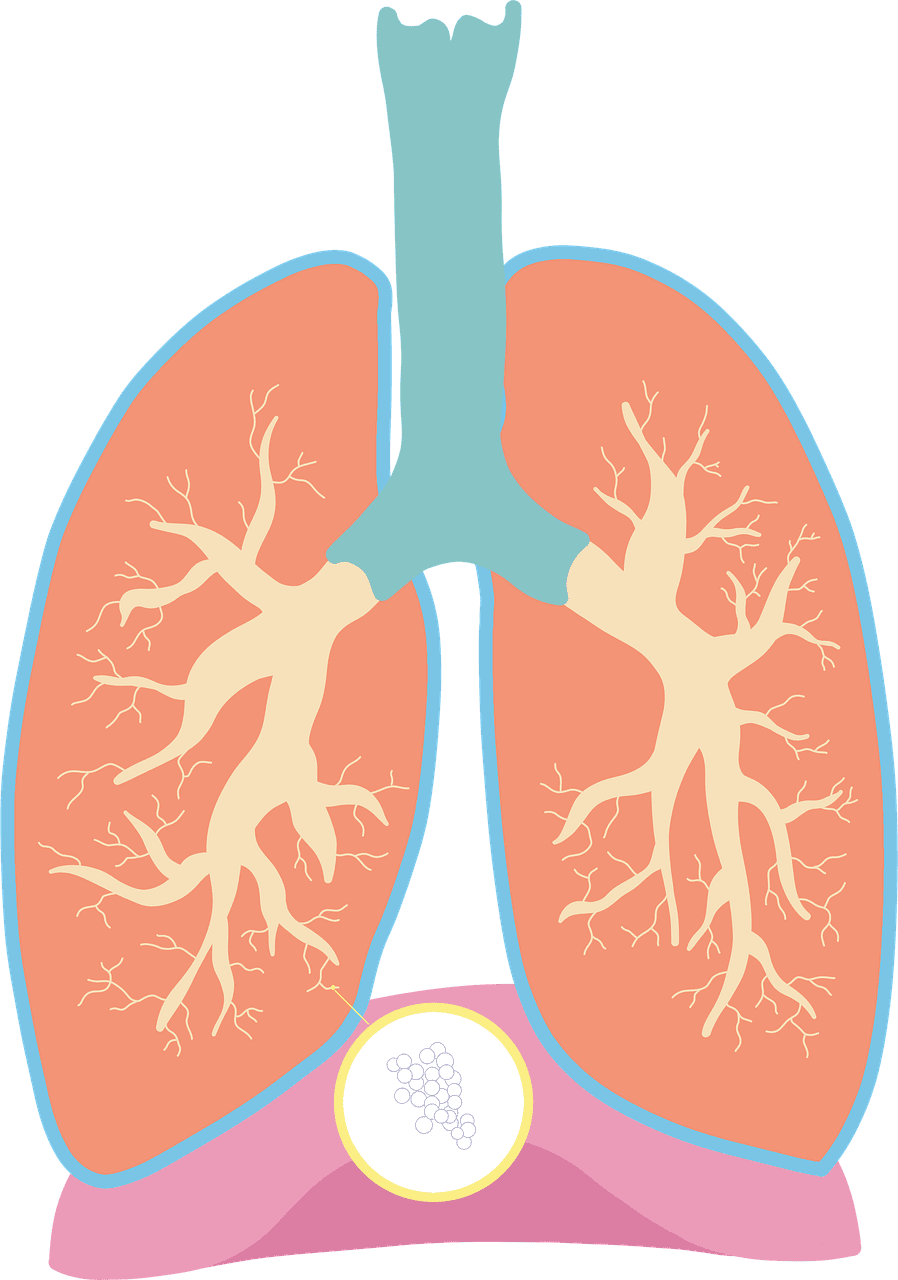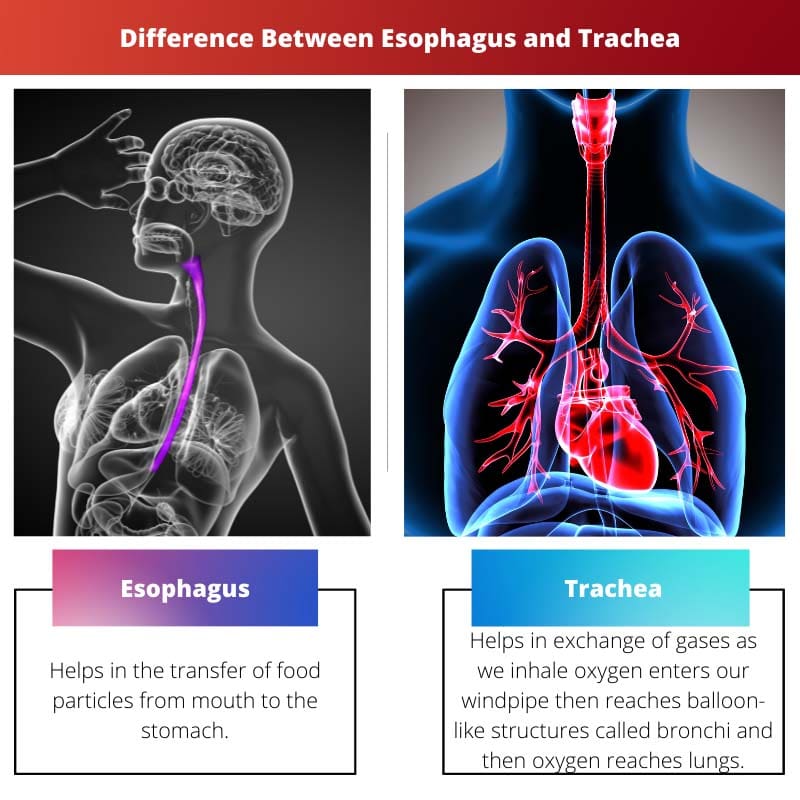Human anatomy is complicated and complex, but two organs that play a primary role in the healthy functioning of our body is the trachea, also called the windpipe, which is directly connected to our lungs and helps us breathe any damage to the windpipe can cause severe damage in delivering oxygen around the body sometimes leading to death.
Key Takeaways
- Esophagus and trachea are different organs in the human body that perform different functions. The esophagus is a muscular tube that connects the pharynx to the stomach and aids in the digestion of food. On the other hand, the trachea is a cartilaginous tube that connects the larynx to the lungs and helps in breathing.
- The structure and composition of both organs are different from each other. The esophagus is composed of smooth muscles, whereas the trachea is composed of cartilage rings. The esophagus is located behind the trachea and in front of the spine, while the trachea is in front of the esophagus and behind the sternum.
- The main function of the esophagus is to transport food from the mouth to the stomach, while the main function of the trachea is to transport air from the nose and mouth to the lungs. While food can be swallowed voluntarily, breathing is an involuntary process controlled by the respiratory center in the brainstem.
Esophagus vs Trachea
The oesophagus is a muscular tube that connects the mouth to the stomach, transporting food and liquids from the mouth to the stomach, where they are further digested and absorbed. The trachea, also known as the windpipe, is a tube that carries air from the mouth and nose to the lungs.

Esophagus is approx. 8 inches long and is surrounded by a thick layer of mucous esophagus containing two sphincters also, LES (lower oesophagal sphincter) and UES (upper esophagus sphincter)
Esophagus, also called the food pipe, is a very long cylindrical pipe connected directly to our stomach. The food pipe carries food, any damage to the food pipe can cause chronic problems in the body, and sometimes artificial drip has to be attached along the nerves if the food pipe stops functioning.
Trachea keeps diving into several tubes called bronchi, which is one bronchus for each lung and helps exchange gases between the environment and lungs. Moreover, it also contains a cartilage ring on the windpipe to avoid any elapse of air.
Comparison Table
| Parameters of Comparison | Esophagus | Trachea |
|---|---|---|
| Other Names | Food pipe | Windpipe |
| Function | It helps in the transfer of food particles from the mouth to the stomach | It helps exchange gases as we inhale oxygen, enter our windpipe, reaches balloon-like structures called bronchi, and then oxygen reaches the lungs. |
| Length | 25 centimetres | 10 to 12 centimetres |
| Organ System | Part of the digestive system | Part of the respiratory system |
| Connection | Connects the moth to the stomach and passes through the diaphragm | It connects the throat to the lungs and further divide into two opening called bronchi |
| Structure | It is a long muscular pipe that contracts and expands, pushing the food to the stomach, also called swallowing. | It is a short, muscular tube with 20 C shape cartilages on the surface, preventing elapsing of the air. |
What is Esophagus?
Esophagus, also known as the food pipe, is a muscular tube that extends 25 cm long that connects the mouth to the stomach.
It helps transfer food from the mouth to the stomach. The esophagus functioning seems complex, but it is obvious when we eat, the food reaches a food pipe and contractions, and expansions help the food to push downward, also known as the feeling of swallowing.
This is how the food reaches our stomach to prevent food from returning to our mouth. Sphincters prevent food from coming back into our mouths. The oesophagus wall is covered with a mucus layer that helps the food delivery easy and does not cause burning on the oesophagus walls.
Esophagus is present behind the windpipe, heart, and in front of the spine; therefore, many times while eating, a person can choke because a large chunk of food can also put pressure on the windpipe, thus making a person difficulty breathing many times people suffer, from food pipe cancer that causes their food pipe to not function.
Therefore, an artificial drip has to be installed in the nerves of the human to transfer the food to the whole body
the esophagus contains two sphincters. One is UES, which is called the upper esophagus sphincter, and the second one is LES which is called the lower esophagus sphincter; the upper sphincter prevents the backward flow of food, and the lower one exits the food into the stomach.

What is Trachea?
Trachea, also known as the windpipe, is a short cylindrical muscular tube connecting the throat to the lungs.
The windpipe then further divides into two bronchi, each for one lung with a balloon-like structure and then divides into many opening tubes that help exchange gases through the lungs.
The trachea is about 10 to 12 cm long. It has C-shaped cartilages to prevent the elapsing of the air trachea
The part of the respiratory system. The trachea begins under the voice box, runs down the breast bone, and is in front of the food pipe. Sometimes eating a big chunk of food can be effective in the pipe as they are closely related to the big chunk and sometimes choke the food by causing deaths; the trachea is part of our respiratory system
the air we breathe enters the nostrils, then enters into a windpipe and then the wind is further divided into two bronchi which further divide into bronchioles and reach the lungs. Then the air divides the oxygen into the whole body, helping our body function.
Many times due to unknown reasons trachea can stop functioning. In that case, oxygen masks must be put on the mouth, also known as artificial respiration, for the body’s functioning.

Main Differences Between Esophagus and Trachea
- The trachea is a part of the respiratory system that helps exchange gases, whereas the Esophagus is part of the digestive system helping transfer food.
- The trachea, also known as the windpipe, connects the throat to the lungs, which further divides into two tubes called bronchi and into more tubes called bronchioles. In contrast, the food pipe, the esophagus, connects the mouth to the stomach.
- The trachea contains C-shaped cartilage that prevents relapsing of the air, whereas esophagus contains the sphincter that prevents the backward flow of the food
- The trachea is approximately 10 to 12 cm long, whereas the esophagus is 25 cm long.
- The trachea helps in the exchange of air when we breathe; air enters our nostril, reaches our windpipe and then the bronchi, a balloon-like structure present at the end of the lungs, whereas the esophagus helps in food transfer when we eat food pushed into our pipe and the pipe contracts and expands and is then pushed into our stomach.




